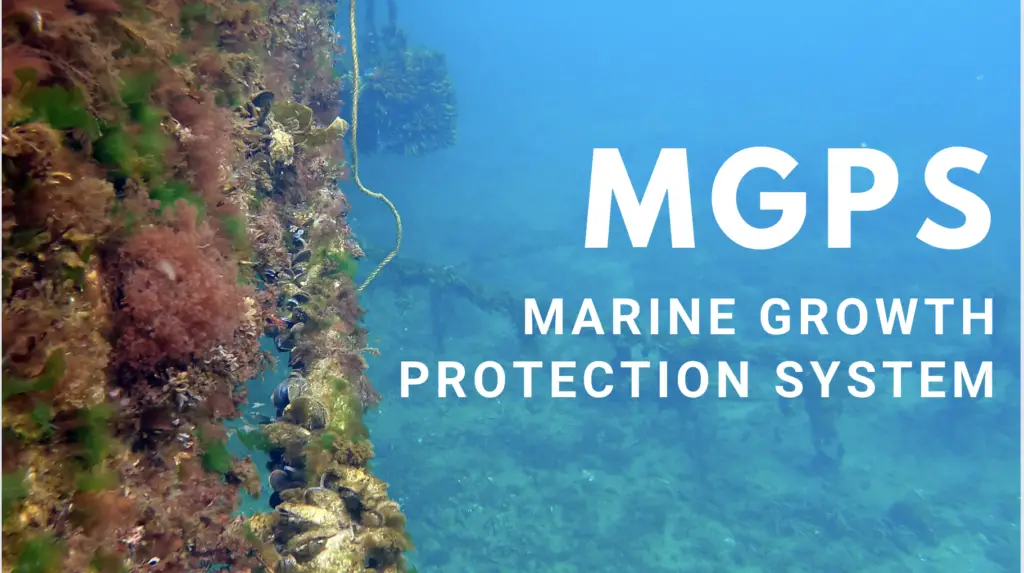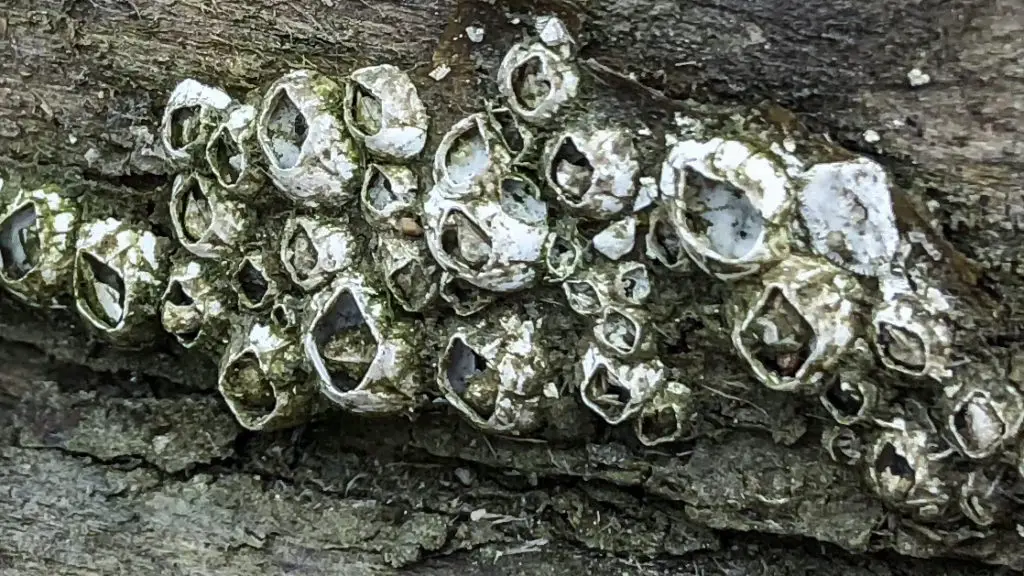Vessels are floating power plants on the sea and the marine growth prevention system is vital for continuous operations. This enormous powerplant is a composite of different systems that is working on one large scale to power, propel, and keep the ship afloat reaching and delivering the certain mission it has from one destination to another.
One of the biggest systems it has is the seawater cooling system where the ship uses the vast ocean around it to maintain the working temperature of the machinery installed which is essential for ship operations aboard.

Another system that largely required the use of seawater is the ship’s ballast system. The ballast system is responsible for correcting and maintaining the ship’s stability whenever the ship is in full or light-loaded conditions and is operating on fresh or salt water areas.
The seawater is kept on ballast tanks, located along the ship’s hull bottom, to counterweight and balance the ship. Seawater aside from surrounding the vessel’s hull is intentionally introduced inside the ship using a box recessed beneath the hull called sea chests.
Most vessels have two sea chests referred to as high sea chest and low sea chest that is operated alternately depending if the vessel is sailing in shallow or deep waters. This continuous flow of the seawater system from chests, pipelines, and machinery builds an ecosystem for living creatures of the sea to propagate.
Over time, these creatures are referred to as marine growth. These marine living things can be quite a handful for ship engineers to deal with in the long run.
What Causes Marine Growth?
Marine growth on ships by definition is the unpleasant sticking/ spreading of barnacles, seaweeds, mussels and etc. to the ship’s hull and seawater system. This infestation starts from microorganisms and bacteria that are commonly found in seawater.

As these organisms touch the vessel hull, pipelines, and systems by non-stop flow a biological film is formed on the ship material surface. The biological film created is then advantaged by the marine beings mentioned as an ideal breeding ground and populates unwantedly.
Why is Marine Growth Prevention System (MGPS) essential for ships?
Certainly, the effect of marine growth on ships is an infinite battle for ship maintenance. Three of such are loss of heat transfer on water-cooled machinery, corrosion and untimely wearing of seawater pipeline, and ship efficiency reduction.
Due to the clogging induced by the marine growth on the seawater pipes, the tube diameters are significantly narrow, which reduces the amount of water flow. A lower flow rate on a cooling system diminishes the outflow delivery of water to the heat exchangers (coil, tube, or plates) which means less cooling volume for escaping heat produced by the machinery.
On the other hand, scaling formed on the cooler (heat exchanger) surface area acts as an insulator between the heat exchanging liquid, thus, hindering the movement of heat to be absorbed by the cooling water. These phenomena mainly are contributors to machinery overheating problems aboard ships.
Uncontrolled marine growth also promotes premature thinning and the metabolic rate of piping corrosion. Corrosion by marine growth is introduced by iron bacteria that can attach themselves to the seawater pipe material as it is flushed continuously by the system.
For instance, a common iron-oxidizing bacterium called Gallionella Ferruginea lives under the biological film sheet and oxidizes the iron-made pipes. Iron, when oxidized, is a ferrous oxide or in layman’s terms called rust. The rust spreads to the material causing it to get thinner and thinner until the pipe is completely damaged if left uncontrolled.
Overall, overpopulated marine growth around the ship’s hull can meaningfully reduce the vessel design speed. The wild inhabitant of marine life on the ship’s hull creates more friction between the structure and the water causing it to be slower than a clean hull surface. Friction by any means is the resistance between two surfaces.
Marine engineers, naval architects, and shipbuilders have innovated ship designs to be equipped against marine life growth. There are adequately many ways to prevent marine life growth aboard, generally, these systems are referred to as Marine Growth Prevention Systems.
How does the MGPS system work?
One of the basic and commonly used ideas of marine growth protection was initially developed by Sir Humphrey Davy in 1824 the concept was called cathodic protection. The cathodic protection can either be done by galvanic protection or impressed current protection.
Galvanic cathodic protection is an electrochemical process that uses the concept of a galvanic cell like we find on a battery. In a battery, two metals, one active and the other noble are submerged into a corrosive or electrolytic media.
The noble metal retains its characteristics and does not produce any chemical activity, meanwhile, active metals tend to react more and give off free ions as these metals are more willing to give off their valence electrons. The electron flow caused by this active metal’s sharing is called electricity.
The active or giving metal is called the anode and the noble or receiving one is the cathode. On the same thought, the system aims for the ship to be the cathode. We can do this by bringing a less noble metal than the ship’s hull material.
For example, less noble materials or anodic metals such as zinc and aluminum alloys are attached around the ship’s hull. Seawater as the electrolytic substance contacting the two different metals completes the galvanic protection system.
Now, as the vessel is continuedly submerged into the water, the attached anode gives off its own ions to the hull surface making it much more invulnerable to chemical activity leading to corrosion. These anodes are sacrificial in nature as it consumes themselves in the process which is why they are also known as sacrificial anodes. (Here is a complete guide about sacrificial anodes).
The anodes during vessel lifting-drydocking, are weighted and replaced whenever they fall short 70% of the anode’s original weight. These sacrificial anodes can be welded or mounted by stud bolts around the ship’s hull.
Impressed Current Cathodic Protection (ICCP)
The other type of cathodic protection used by ships is called Impressed Current Cathodic Protection or commonly called ICCP. In ICCP the hull is also aimed to be the cathode but to be able to achieve this a potential difference is kept by applying current to the hull at very minimal values to revert the natural flow of electrons.
A ship’s hull has certain anodic and cathodic areas. Anodic areas are such portions where positive ions do cluster, on the other hand, cathodic areas are where negative ions are concentrated. By the natural phenomena called electrolysis of seawater, the electrons on the cathodic areas produce hydroxyl ions.
The seawater as a conductor allows the travel of negatively charged hydroxyl ions to the anodic areas where it reacts and produces ferrous hydroxide. These ferrous hydroxide formations as being supplementarily oxidized by oxygen found in water end as ferric hydroxide- rust.
To control the flow of electrons a power source is used to impress electrons into the ship’s hull making it fully cathodic. Now, in the same manner, electrons introduced on the surface form negatively charged hydroxyl ions.
Since the hull is fully cathodic the electrons cannot leave the surface to react with positively charged ions so a protective anode is installed. Insulated from the ship’s hull and connected to the positive supply of the power source, these anodes serve as returning paths for negatively charged ions to react harmlessly to the ship’s hull. A circuit is then completed, cycling and protecting the ship from corrosion.
The difference between MGPS and ICCP Systems
Both cathodic protections discussed above are good ways to protect the hull although both of them have their own advantages and disadvantages as well. These are;
- In galvanic cathodic protection, a power supply is not needed unlike in ICCP where it needs current flow to work.
- In ICCP the system can last longer since in galvanic cathodic protection the efficiency ends by the sacrificial anodes have been completely used up.
- The Impresses current cathodic protection is more complicated to maintain as it requires close monitoring and correct values to be set unlike galvanic cathodic protection with no operational requirement at all.
- The ICCP if left uncontrolled especially in ports (must be turned off) can cause circuit interruptions or even fire aboard.
Alternative marine growth prevention systems
Other marine growth inhibitor systems that are widely used on ship operations are;
Electrolytic biofouling protection.
This kind of system is commonly found on sea chests and same like cathodic protection uses metal ions to protect the ship’s material. The electrolytic protection uses two anodes where a direct current is supplied.
Each of the anodes when passed by electricity produces ions that travel across the seawater system. One anode is responsible for preventing the accumulation of marine growth on the system surfaces while the other anode is accountable for eliminating corrosion-promoting agents.
Chemical dosing.
The system requires the use of marine life inhibitor chemicals. Manufacturers of such substances follow a specific calculation of the dosing rate. The system introduces the chemical to an injection point e.g., sea chest, evaporators, and heat exchangers by the use of a dosing pump suctioning the chemical stored on a reservoir.
The dosing chemical flow rate can be set electronically by limiting the no of injections over a preset time interval. One popularly known marine life inhibitor is the Bioguard plus manufactured by Wilhelmsen.
Ultrasonic system.
This kind of system is a mechanical means of preventing barnacle growth in the ship systems by the use of fine vibrations. Transducers fitted to the metal object to be protected are supplied with electric impulses at a high frequency to generate ultrasonic beams. The high frequency of the fine vibration produced breaks the microorganisms before it creates an adequate biological film for the marine life ecosystem to prosper.
Antifouling paints.
The ship hull in constant interaction with the seawater is applied with special paints called antifouling paints. These coating substances as the name suggests reducing marine growth by slowing down the rate of marine life habitats anchoring on the ship’s hull.
Usually, they are applied or coated twice with at least 100 DFT (Dry Film Thickness) per coat. These paints could last from one to three years, reapplication is upon observation by a paint specialist during scheduled ship drydocking.
Summary on Marine Groth Protection
In choosing the proper marine growth prevention on a ship several factors are worth considering. One of the aspects that matter is the size of the vessel – on small crafts, the use of sacrificial anodes fits the most seeing the surface area to be covered is relatively small meaning lesser anodes are required compared to Cape Size and Very Large Crude Carriers (VLCC) size vessels.
This certain point impacts the vessel marine growth prevention system (MGPS) maintenance cost in the long run. Another one is the material type the vessel hull is made of. Most vessels are made of steel but there are also vessels made of Aluminum hull and fiber glasses. The MPGS to be used aboard a specific ship is studied carefully by shipbuilders to provide the most efficient and most compatible system to be installed.
- Types of Gas Carriers as per IGC Code – April 22, 2025
- Wind-Assisted Propulsion Systems (WAPS): A Game Changer for Maritime Decarbonization – February 6, 2025
- 10 Boat Salvage Yards in California – January 25, 2025



